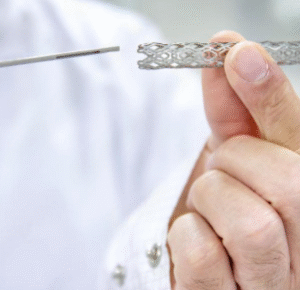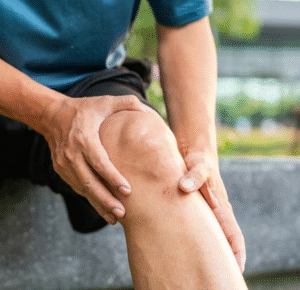1. Introduction to Gum Graft Surgery
Gum graft surgery is a common dental procedure aimed at treating receding gums. It involves taking tissue, often from the roof of the mouth, and attaching it to the areas where the gums have receded. This surgery helps protect your teeth from the damaging effects of gum recession.
2. Purpose of Stitches in Gum Graft Surgery
Stitches, or sutures, are used to hold the grafted tissue in place during the healing process. They ensure the tissue stays secure, allowing for proper integration with the existing gums. Without stitches, the graft may not adhere correctly, compromising the success of the surgery.
3. Types of Stitches Used
There are two main types of stitches used in gum graft surgery: absorbable and non-absorbable. Absorbable stitches dissolve on their own over time, while non-absorbable stitches need to be removed by the dentist. The type used depends on the specific needs of the patient and the surgeon’s preference.
4. Absorbable Stitches: What to Expect
Absorbable stitches are designed to break down naturally in the body. They typically dissolve within one to two weeks, depending on the material used and the patient’s healing rate. These stitches are convenient as they eliminate the need for a follow-up visit for removal.
5. Non-Absorbable Stitches: What to Expect
Non-absorbable stitches do not dissolve and must be removed by a dentist. They are usually taken out about one to two weeks after surgery. This type of stitch provides strong support for the graft but requires an additional appointment for removal.
6. Healing Process After Gum Graft Surgery
The healing process varies among individuals, but generally, it takes about two weeks for the initial healing. Full recovery can take a few months. During this time, it’s crucial to follow your dentist’s care instructions to ensure proper healing and graft success.
7. Initial Days After Surgery
In the initial days following gum graft surgery, you may experience some discomfort, swelling, and minor bleeding. These symptoms are normal and usually subside within a few days. Your dentist may prescribe pain relief medication and advise you on how to manage these symptoms.
8. Care for Stitches: Dos and Don’ts
Proper care of your stitches is essential for successful healing. Do avoid vigorous brushing near the surgical site and don’t use a straw, as suction can dislodge the graft. Rinse gently with an antiseptic mouthwash if recommended by your dentist to prevent infection.
9. Dietary Recommendations
After gum graft surgery, stick to a soft diet to avoid putting stress on the graft site. Foods like yogurt, mashed potatoes, and smoothies are good options. Avoid hot, spicy, or crunchy foods that could irritate the surgical area or dislodge the stitches.
10. Signs of Healing Complications
While complications are rare, it’s important to watch for signs of infection or graft failure. Symptoms such as persistent bleeding, severe pain, swelling that doesn’t subside, or pus around the stitches require immediate dental attention. Early intervention can prevent more serious issues.
11. Managing Pain and Discomfort
Pain and discomfort are common after gum graft surgery, but they can be managed effectively. Over-the-counter pain relievers, ice packs, and following your dentist’s care instructions can help alleviate pain. Avoid smoking and alcohol, as they can hinder the healing process.
12. Importance of Follow-Up Visits
Follow-up visits are crucial for monitoring the healing process. Your dentist will check the graft site, ensure the stitches are intact, and address any concerns. These visits help catch potential issues early and ensure the success of the surgery.
13. Removal of Non-Absorbable Stitches
If non-absorbable stitches were used, they will need to be removed approximately one to two weeks after surgery. This is usually a quick and painless procedure, and your dentist will assess the healing progress during this visit.
14. Long-Term Care After Gum Graft Surgery
Long-term care is essential to maintain the results of your gum graft surgery. Practice good oral hygiene, including gentle brushing and flossing. Regular dental check-ups and cleanings will help ensure your gums remain healthy and the graft stays intact.
15. Expected Results After Surgery
The primary goal of gum graft surgery is to restore the gum line and protect the teeth. Most patients see a significant improvement in gum health and aesthetics. The grafted tissue typically blends well with the natural gums, providing a seamless and healthy appearance.
16. Emotional Impact of Recovery
Recovery from gum graft surgery can have an emotional component, as the process requires patience and care. Understanding the healing timeline and maintaining a positive outlook can help you navigate this period more comfortably and ensure a successful outcome.
17. Cost of Gum Graft Surgery and Follow-Up Care
The cost of gum graft surgery can vary based on the extent of the procedure and the materials used. Follow-up care, including stitch removal and additional check-ups, should be factored into the overall cost. Many dental insurance plans cover part of these expenses.
18. Alternatives to Gum Graft Surgery
In some cases, less invasive treatments may be considered as alternatives to gum graft surgery. These can include scaling and root planing or the use of tissue-stimulating proteins. Discussing all available options with your dentist will help you make an informed decision.
19. Success Rates of Gum Graft Surgery
Gum graft surgery generally has a high success rate, with most patients experiencing significant improvements. The success largely depends on following post-operative care instructions and maintaining good oral hygiene. Regular dental visits are crucial for monitoring and ensuring lasting results.
20. Patient Experiences and Testimonials
Hearing about other patients’ experiences can provide reassurance and insight. Many patients report positive outcomes and improved confidence after gum graft surgery. Testimonials often highlight the importance of choosing an experienced surgeon and diligently following aftercare instructions.
21. Role of Technology in Gum Graft Surgery
Advancements in dental technology have made gum graft surgery more efficient and less invasive. Techniques such as laser therapy and improved suturing materials contribute to better outcomes and faster healing times. Staying informed about these advancements can help you make better healthcare decisions.
22. Psychological Benefits of Gum Graft Surgery
Beyond the physical benefits, gum graft surgery can have positive psychological effects. Restoring a healthy gum line can enhance your smile and boost self-esteem. Patients often feel more confident in social interactions and experience an overall improvement in quality of life.
23. FAQs About Stitches and Gum Graft Surgery
Common questions about stitches and gum graft surgery include concerns about pain, recovery time, and long-term care. Knowing the answers to these frequently asked questions can help you feel more prepared and confident about the procedure and its outcomes.
24. Preparing for Your Surgery
Preparation is key to a successful gum graft surgery. Ensure you understand all pre-operative instructions from your dentist, such as fasting requirements and medication adjustments. Arranging for post-surgery transportation and having soft foods ready at home can help ease the recovery process.
25. Conclusion: The Importance of Post-Surgery Care
Taking care of your stitches and following all post-operative instructions are crucial for a successful recovery after gum graft surgery. By understanding the healing process and being proactive in your care, you can achieve the best possible results and enjoy a healthy, confident smile.




